Refacing laminate countertops is an effective and economical way to update the look of your kitchen or bathroom without the expense and hassle of a complete renovation. This process involves covering the existing laminate surface with new material, which can significantly enhance the appearance and functionality of the countertops. The first step in refacing laminate countertops is to thoroughly clean the existing surface. Use a mild detergent and warm water to remove any dirt, grease, or residue. It’s crucial to ensure the surface is completely dry before proceeding, as any moisture can affect the adhesion of the new material.
Next, inspect the existing laminate for any damage, such as chips, cracks, or loose edges. Minor damages can be repaired with laminate filler or adhesive, while more extensive damage may require replacing sections of the laminate. Sanding the surface lightly with fine-grit sandpaper can help smooth out any imperfections and create a better surface for the adhesive to bond to. After sanding, wipe the surface with a damp cloth to remove any dust or debris.
Once the surface is prepared, you can choose the new material for refacing. There are several options available, including laminate sheets, peel-and-stick tiles, and paint. Laminate sheets are a popular choice because they are durable, easy to clean, and come in a wide variety of colors and patterns. Peel-and-stick tiles are another convenient option that can mimic the look of natural stone or ceramic tile. If you prefer a more customized look, consider using countertop paint, which allows you to create a unique design.
If you decide to use laminate sheets, measure the countertops carefully to ensure you purchase enough material. Cut the laminate sheets to size using a utility knife or a laminate cutter. It’s important to make precise cuts to ensure a seamless fit. Apply high-quality contact cement to both the existing countertop and the back of the laminate sheet, following the manufacturer’s instructions. Allow the adhesive to become tacky before carefully positioning the laminate sheet on the countertop. Use a roller to press the laminate firmly onto the surface, starting from the center and working outwards to remove any air bubbles.

For peel-and-stick tiles, start by laying out the tiles to determine the best placement. Peel off the backing and press each tile firmly onto the countertop, ensuring there are no gaps between tiles. Use a rolling pin or a laminate roller to secure the tiles in place and remove any air bubbles. For areas around sinks or edges, you may need to cut the tiles to fit. A utility knife or a pair of heavy-duty scissors can be used for this purpose.
If you opt for countertop paint, begin by applying a primer designed for laminate surfaces. This helps the paint adhere better and provides a smooth base. Once the primer is dry, apply the paint in thin, even coats, allowing each coat to dry completely before applying the next. You may need to apply multiple coats to achieve the desired coverage. For added durability, finish with a clear topcoat to protect the painted surface from scratches and stains.
Edge banding is an important step in refacing laminate countertops, as it covers the raw edges of the laminate and gives the countertop a finished look. Edge banding is available in various materials, including laminate strips, wood veneer, and PVC. To apply edge banding, cut the strips to the correct length and use contact cement or an iron-on adhesive to secure them to the edges of the countertop. Use a roller or a block of wood to press the banding firmly into place and trim any excess with a utility knife.
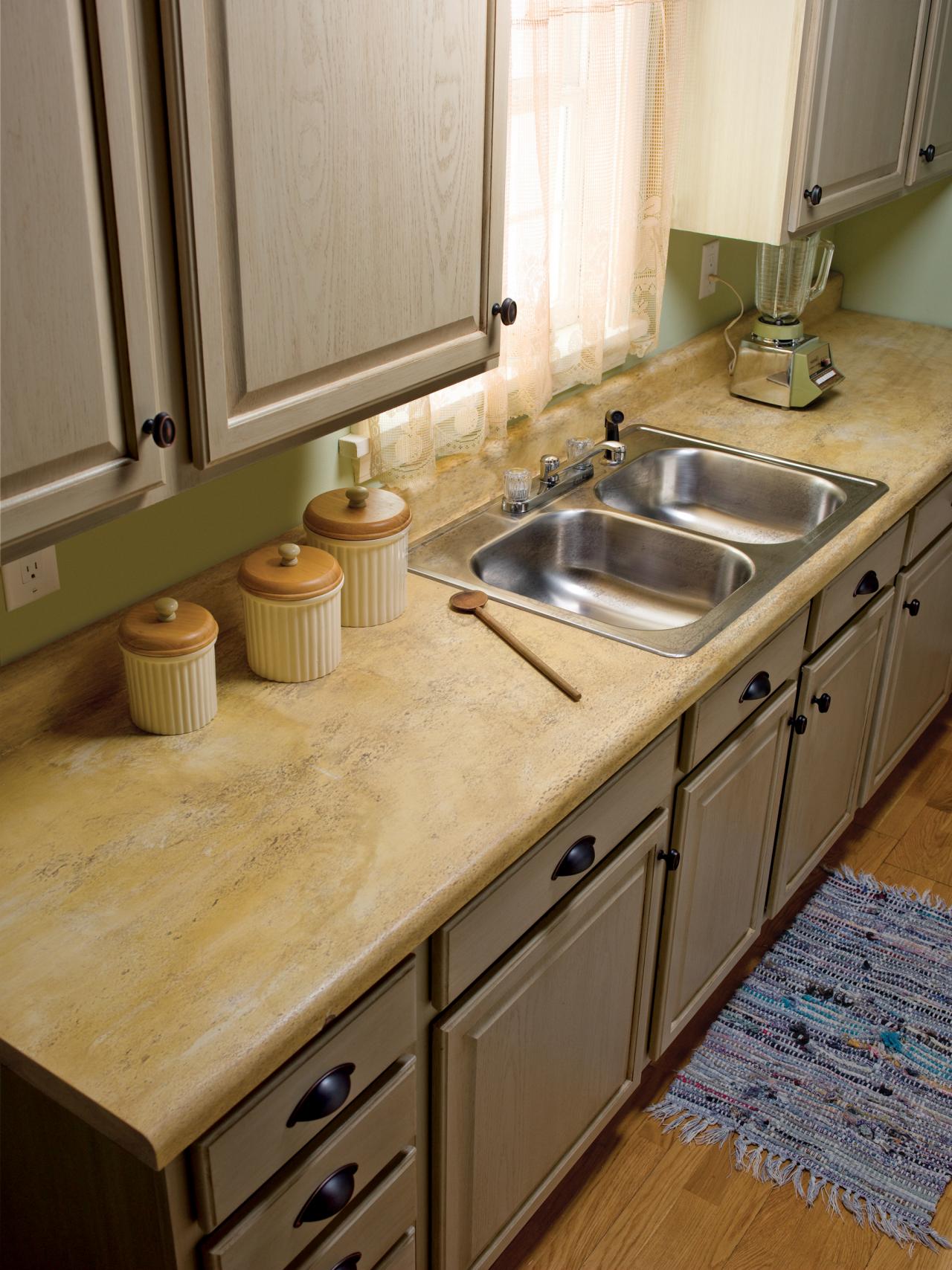
After refacing, it’s essential to allow the new surface to cure completely before using the countertops. This can take anywhere from 24 to 48 hours, depending on the materials and adhesives used. During this time, avoid placing heavy objects on the countertops or exposing them to moisture. Once cured, your newly refaced countertops will be ready for use and will provide a fresh, updated look to your space.
Maintaining refaced laminate countertops is straightforward. Clean the surface regularly with a soft cloth and a mild detergent to prevent the build-up of dirt and grime. Avoid using abrasive cleaners or scrubbers, as these can scratch the surface. To prevent damage from hot pots and pans, always use trivets or hot pads. Additionally, use cutting boards when preparing food to avoid cutting directly on the countertop.
One of the benefits of refacing laminate countertops is the wide range of design options available. Whether you prefer the look of natural stone, wood, or a bold color, there’s a laminate option to suit your style. Refacing allows you to experiment with different looks without the commitment of a full countertop replacement. This flexibility makes it an excellent choice for those who enjoy changing their home’s decor frequently.
Cost is another significant advantage of refacing laminate countertops. Compared to replacing countertops entirely, refacing is much more affordable and can be completed in a fraction of the time. This makes it an ideal solution for budget-conscious homeowners who want to refresh their kitchen or bathroom without breaking the bank. Additionally, because the process is less invasive, it minimizes disruption to your daily routine.

Refacing laminate countertops is also an environmentally friendly option. By reusing the existing countertop structure, you reduce waste and the demand for new materials. This makes it a more sustainable choice compared to full replacement, which often involves disposing of the old countertops and consuming additional resources for new ones.
When considering refacing laminate countertops, it’s essential to weigh the pros and cons. While refacing is a cost-effective and convenient way to update your space, it may not be suitable for countertops with significant structural damage. In such cases, replacing the countertops entirely may be a better option. Additionally, while laminate is durable, it is not as heat-resistant or scratch-resistant as some other countertop materials, so it may require more careful use and maintenance.
Refacing laminate countertops is a practical and affordable way to breathe new life into your kitchen or bathroom. The process involves cleaning and preparing the existing surface, choosing and applying the new material, and finishing with edge banding and curing. With a variety of materials and design options available, you can achieve a custom look that enhances the overall aesthetic of your space. Regular maintenance and careful use will help ensure your refaced countertops remain beautiful and functional for years to come.

Common Mistakes to Avoid
Refacing laminate countertops can be a straightforward project, but there are several common mistakes to avoid to ensure the best results. One of the most frequent errors is inadequate surface preparation. Failing to thoroughly clean and sand the existing countertop can prevent the new material from adhering properly, leading to peeling or bubbling. Take the time to clean the surface thoroughly and sand it lightly to create a good bonding surface for the adhesive.
Another common mistake is using the wrong type of adhesive. Different materials require specific adhesives, and using the incorrect one can result in poor adhesion and a less durable finish. Always follow the manufacturer’s recommendations for the type of adhesive to use with your chosen material. Additionally, ensure the adhesive is applied evenly to prevent bubbles and gaps.
Inaccurate measurements and cuts can also cause problems. Precise measurements are crucial for ensuring a seamless fit, especially when working with laminate sheets or peel-and-stick tiles. Take the time to measure carefully and make precise cuts to avoid gaps and overlaps. Using a straightedge and a sharp utility knife can help achieve clean, accurate cuts.
Failing to allow adequate curing time is another common mistake. After applying the new material, it’s essential to let the adhesive cure completely before using the countertops. Rushing this process can compromise the durability and appearance of the refaced surface. Follow the recommended curing times for the materials and adhesives used.
Lastly, neglecting to maintain the refaced countertops properly can lead to premature wear and damage. Regular cleaning with mild detergents and avoiding abrasive cleaners or scrubbers will help preserve the finish. Use trivets, hot pads, and cutting boards to protect the surface from heat and scratches. By taking these precautions, you can ensure your refaced countertops remain beautiful and functional for years to come.
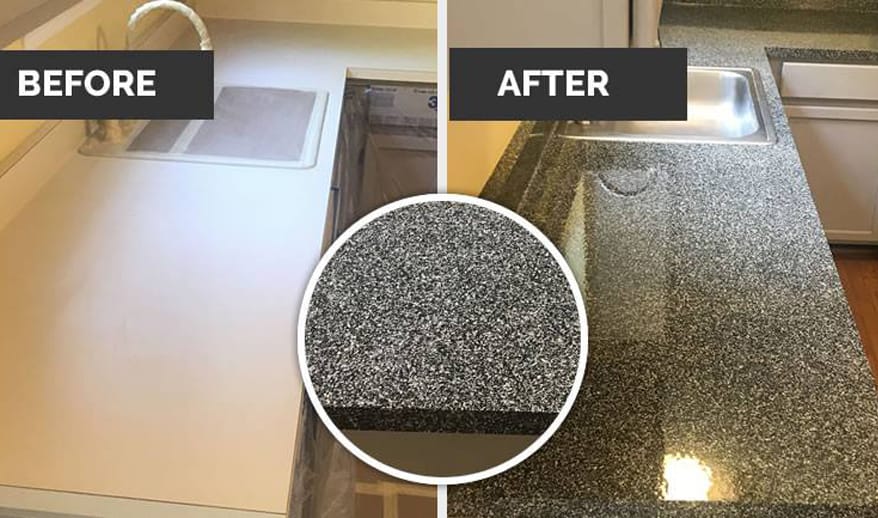
How long does it take to reface laminate countertops?
The time required to reface laminate countertops depends on the size of the area and the materials used. Generally, the process can be completed in a few days. Preparation, including cleaning and sanding, typically takes a few hours. Applying the new material, whether it’s laminate sheets, peel-and-stick tiles, or paint, can take a day or two, depending on the drying and curing times. Allowing adequate curing time is essential, so plan for a total of 2-3 days to ensure the best results.
Can I reface laminate countertops myself, or should I hire a professional?
Refacing laminate countertops can be a DIY project if you have basic handyman skills and the right tools. The process involves cleaning, measuring, cutting, and applying the new material, which can be manageable for many homeowners. However, if you’re not confident in your abilities or if the countertops have significant damage, hiring a professional might be a better option. Professionals can ensure a high-quality finish and address any underlying issues that may not be apparent.
What materials can be used to reface laminate countertops?
Several materials can be used to reface laminate countertops, including laminate sheets, peel-and-stick tiles, and countertop paint. Laminate sheets are durable and come in various colors and patterns. Peel-and-stick tiles offer a quick and easy installation and can mimic the look of natural stone or ceramic tile. Countertop paint allows for a customized look and can be sealed with a clear topcoat for added durability. Each material has its advantages, so choose the one that best suits your needs and preferences.

How do I maintain refaced laminate countertops?
Maintaining refaced laminate countertops involves regular cleaning with a soft cloth and mild detergent. Avoid using abrasive cleaners or scrubbers, as they can scratch the surface. Use trivets or hot pads to protect the countertops from hot pots and pans, and always use cutting boards when preparing food. Periodically check for any signs of damage or wear, and address them promptly to prevent further issues. Proper maintenance will help keep your countertops looking new and extend their lifespan.
Are there any drawbacks to refacing laminate countertops?
While refacing laminate countertops is a cost-effective and convenient option, there are some potential drawbacks. Laminate is not as heat-resistant or scratch-resistant as materials like granite or quartz, so it requires more careful use. Additionally, if the existing countertops have significant structural damage, refacing may not be the best solution. In such cases, replacing the countertops entirely might be necessary. It’s essential to weigh the pros and cons and consider your specific needs and budget when deciding whether to reface or replace.
Can I change the color or pattern of my countertops when refacing?
Yes, one of the main advantages of refacing laminate countertops is the ability to change the color or pattern. Laminate sheets and peel-and-stick tiles come in a wide range of colors and designs, allowing you to create a new look that complements your kitchen or bathroom decor. If you opt for countertop paint, you can customize the color and even create unique patterns or designs. Refacing gives you the flexibility to update the appearance of your countertops without the expense and hassle of a full replacement.
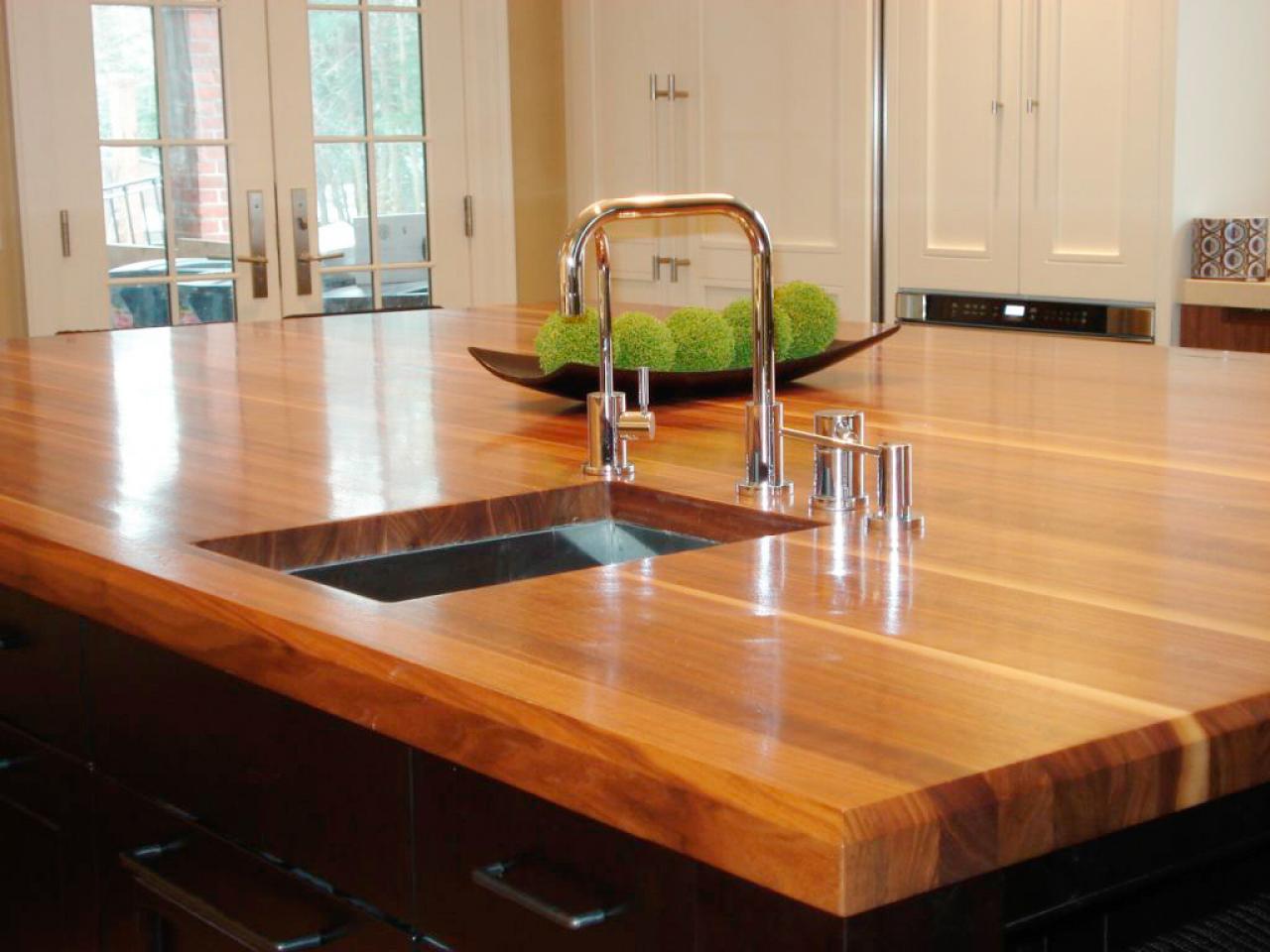
Refacing Laminate Kitchen Countertops

EASY) How to Resurface Laminate Countertops for Under $50

Kitchen Countertop – Miracle Method
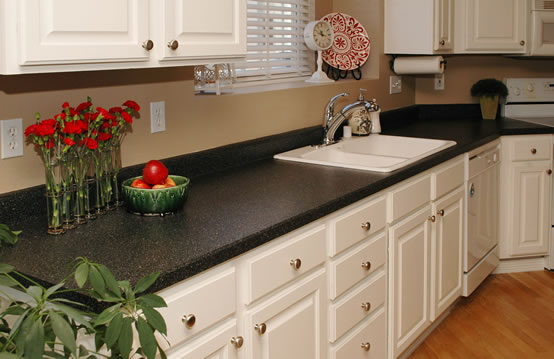
How to Repair and Refinish Laminate Countertops
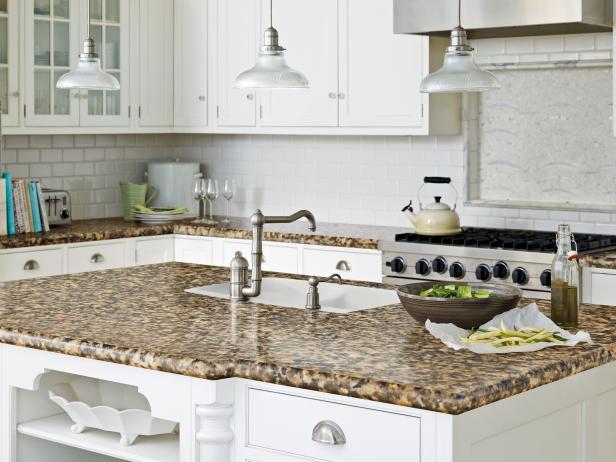
Related articles:
- Laminate Countertops Colors
- Laminate Countertops And Backsplash
- Reface Laminate Countertops
- DIY Laminate Countertop Installation
- DIY Laminate Countertops Makeover
- Laminate Countertop Redo
- Laminate Countertops White Cabinets
- How To Repair Broken Laminate Countertop
- Laminate Countertops Remodel
- Laminate Countertops With Oak Cabinets
Revamp Your Kitchen with Refacing Laminate Countertops
Do you love the layout of your kitchen but want to update the look of your laminate countertops? Refacing laminate countertops is a cost-effective solution that gives your kitchen a fresh new look without the expense of a full kitchen renovation.
What is Refacing Laminate Countertops?
Refacing laminate countertops involves covering the existing countertops with a new layer of laminate material. This process is simple, fast, and affordable, giving your kitchen a fresh new look in just a few hours.
Step-by-Step Guide to Refacing Laminate Countertops
- Clean and Prepare the Surface Start by cleaning the countertops thoroughly to remove any dirt, grease, or debris. Next, sand down any rough spots and repair any chips or scratches in the surface.
- Measure and Cut the Laminate Material Measure the length and width of your countertops and cut the laminate material to size, allowing for a slight overhang on the edges.
- Apply the Laminate Material Apply a thin layer of contact cement to the countertops and to the back of the laminate material. Wait for the glue to dry according to the manufacturer’s instructions, then carefully place the laminate material onto the countertops and press firmly to ensure a secure bond.
- Trim and Finish the Edges Use a laminate trim piece to cover the overhanging edges of the countertops, cutting and fitting the trim pieces to size. Finish the edges by applying a strip of silicone caulk along the seams to prevent moisture from seeping into the countertops.
- Seal the Countertops Apply a coat of clear, water-resistant sealer to the surface of the countertops to protect the new laminate material and enhance its durability.
Can I reface my laminate countertops myself?
Yes, refacing laminate countertops is a simple DIY project that can be completed in just a few hours. With the right tools and materials, you can easily transform the look of your kitchen without the need for professional assistance.
How long does it take to reface laminate countertops?
The length of time required to reface laminate countertops varies depending on the size of your kitchen and the complexity of the project. On average, the process can be completed in one day, giving you a new and refreshed kitchen in no time.
What kind of laminate material should I use to reface my countertops?
When refacing laminate countertops, it’s important to choose a laminate material that matches the existing color and finish of your countertops. Be sure to check the manufacturer’s specifications for the type of laminate that is suitable for this purpose.
Refacing laminate countertops is a cost-effective solution for updating the look of your kitchen. Whether you’re a DIY enthusiast or prefer to hire a professional, this simple and fast process gives your kitchen a fresh new look in no time. So, don’t wait any longer, start your kitchen renovation today!